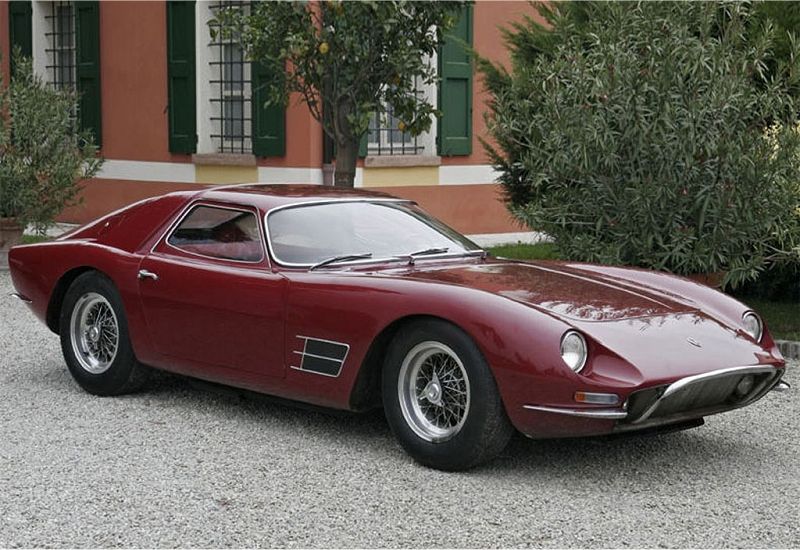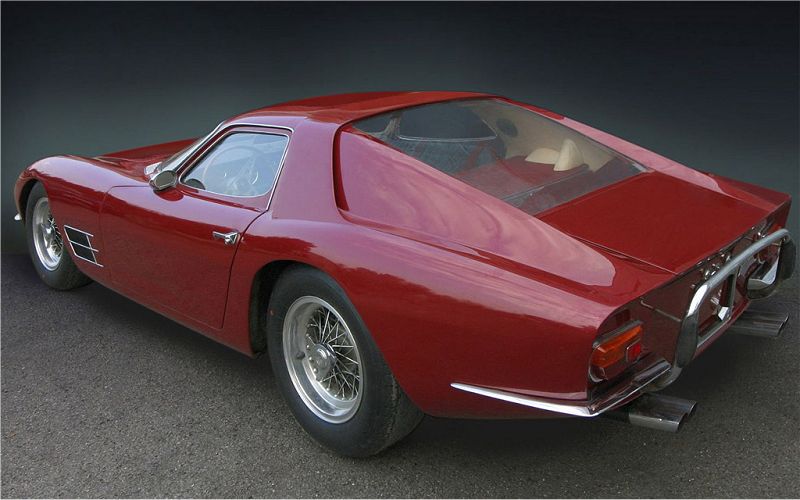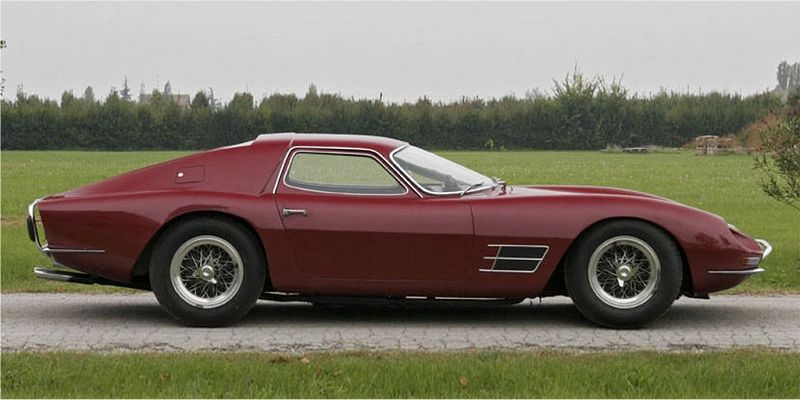Description
The Lamborghini 400 GT Monza by Neri & Bonacini was one of the most mysterious and alluring prototypes in Lamborghini’s early history—a unique, coachbuilt sports coupé that combined the company’s sophisticated 400 GT mechanicals with an entirely bespoke aluminium body. Created in 1966 by the Modenese specialists Neri & Bonacini, the same workshop that had helped build the first Lamborghini chassis, the Monza represented an independent vision of what a Lamborghini grand tourer could be: lighter, sharper, and more aggressive than anything the factory itself produced.
The story of the Monza begins with Giorgio Neri and Luciano Bonacini, two master fabricators based in Modena who had established a reputation for precision craftsmanship in the Italian racing world. Before Lamborghini existed, they had built chassis and competition cars for Ferrari, Maserati, and Iso. When Ferruccio Lamborghini launched his car company in 1963, he turned to Neri & Bonacini to construct the first 350 GTV prototype chassis. Their collaboration continued into the early production years, as they assisted in developing early 350 and 400 GT components before Lamborghini brought more of the work in-house.
By 1966, with the success of the 400 GT 2+2 establishing Lamborghini as a major player, Neri & Bonacini decided to create their own interpretation of the Sant’Agata mechanicals. They obtained a complete 400 GT rolling chassis and drivetrain and set about designing a new body for it—a car they hoped would attract wealthy buyers seeking something even more exclusive than a standard Lamborghini. The result was the 400 GT Monza, a sleek, aerodynamic, and completely unique berlinetta that blended racing spirit with grand touring luxury.
Mechanically, the Monza retained Lamborghini’s magnificent 3,929 cc all-aluminium V12 engine, originally designed by Giotto Bizzarrini and refined by Gian Paolo Dallara. With its four overhead camshafts, six twin-choke Weber 40 DCOE carburetors, and high 9.5:1 compression ratio, the engine produced approximately 320 horsepower at 6,500 rpm. Paired with Lamborghini’s five-speed gearbox and independent suspension at all four corners, the car promised performance equal to, if not greater than, the factory-built 400 GT. The lightweight aluminium body and shorter wheelbase also suggested a more responsive and agile driving experience.
The Monza’s styling was entirely the work of Neri & Bonacini, and it reflected their background in competition car construction. The car’s proportions were lower and more compact than the 400 GT, with a long, pointed nose, steeply raked windscreen, and a fastback tail that flowed seamlessly into the rear haunches. The design blended elements of both Italian and racing aesthetics: the front end featured covered headlamps and a narrow air intake reminiscent of contemporary sports racers, while the flanks were clean and unadorned, emphasizing the car’s purity of form. The rear was sharply tapered, with small round taillights and twin exhaust outlets integrated neatly into the bodywork. The entire car stood lower than the standard Lamborghini, giving it a taut, athletic stance.
The cockpit was finished in a minimalist yet elegant style, emphasizing functionality and craftsmanship. The dashboard featured a set of round, deeply recessed instruments and simple switchgear, while the seats were upholstered in fine leather. The roofline was low, and the windows small, giving the interior a cocoon-like, purposeful atmosphere. Despite its compactness, the car retained a sense of refinement consistent with Lamborghini’s grand touring ethos.
Performance figures for the Monza were never officially recorded, but with its lighter body and the full power of Lamborghini’s V12, it was likely capable of exceeding 250 km/h (155 mph). Contemporary observers described it as quick, agile, and exceptionally stable at speed. Its shorter dimensions and reduced weight would have given it a sharper handling character than the standard 400 GT, closer in feel to a competition car than a luxury tourer.
The Lamborghini 400 GT Monza was completed in 1966 and shown privately to potential buyers in Italy. It was likely intended as a production prototype for a limited series of bespoke cars, but that never happened. Around this time, Neri & Bonacini shifted their focus toward other projects—including the construction of the mid-engined Nembo Spyders and their own ambitious GT prototype, the Studio Ghia 3500 GT. The Monza remained a one-off, and shortly thereafter, the partnership between Neri and Bonacini dissolved.
For decades, the Monza was thought lost, its existence known only from a few period photographs. Then, remarkably, it resurfaced in the early 2000s in California, still in original condition and showing just 7,000 kilometers on its odometer. It had reportedly been sold new to a Spanish customer who took it to the United States, where it remained hidden for decades before being rediscovered. The car was subsequently authenticated and restored, preserving its unique craftsmanship and design integrity.
Today, the Lamborghini 400 GT Monza Neri & Bonacini is recognized as one of the rarest and most historically significant Lamborghinis ever built. It stands as a bridge between two worlds—the precision engineering of Sant’Agata and the artistry of Modenese coachbuilding. It reflects an era when small workshops could still create bespoke, hand-shaped bodies over exotic mechanical foundations, producing one-of-a-kind machines that blended innovation and individuality.
The Monza remains a stunning example of Italian automotive creativity: an independent vision of Lamborghini’s potential, conceived not in a corporate studio but in a craftsman’s workshop. Its flowing lines, featherweight construction, and magnificent V12 heart embody the spirit of 1960s Italian design at its most pure. More than just a prototype, the 400 GT Monza was a declaration of artistic freedom—a Lamborghini reimagined by those who helped build its very foundation.


